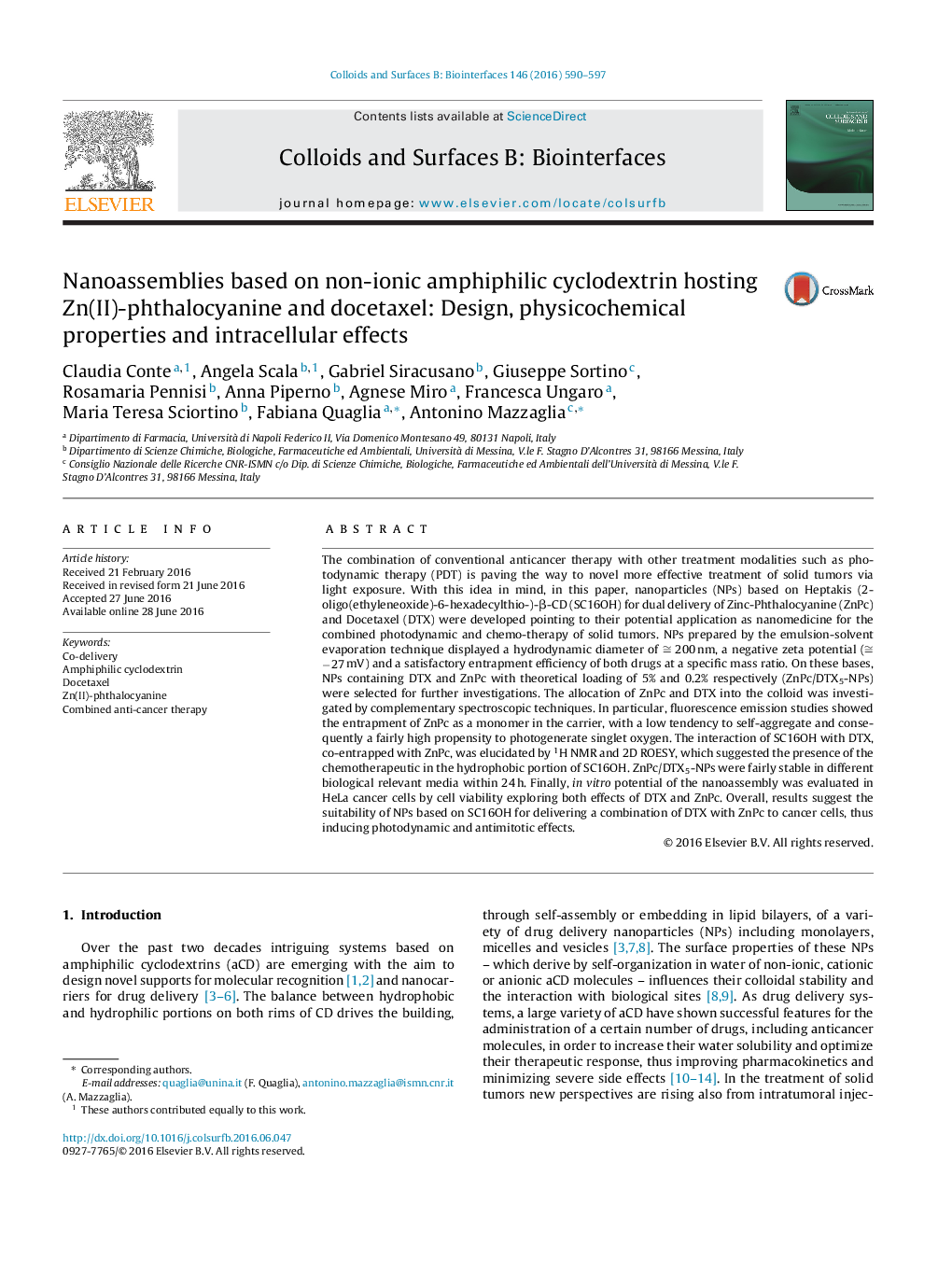| کد مقاله | کد نشریه | سال انتشار | مقاله انگلیسی | نسخه تمام متن |
|---|---|---|---|---|
| 598787 | 1454258 | 2016 | 8 صفحه PDF | دانلود رایگان |

• Design of amphiphilic cyclodextrin nanoassemblies delivering photosensitiser and chemotherapeutic drugs.
• Elucidation of interaction sites of the drugs into the cyclodextrin nanoassemblies.
• Preliminary exploration of cell death mechanism upon action of both photosensitiser and chemiotherapeutic agents.
The combination of conventional anticancer therapy with other treatment modalities such as photodynamic therapy (PDT) is paving the way to novel more effective treatment of solid tumors via light exposure. With this idea in mind, in this paper, nanoparticles (NPs) based on Heptakis (2-oligo(ethyleneoxide)-6-hexadecylthio-)-β-CD (SC16OH) for dual delivery of Zinc-Phthalocyanine (ZnPc) and Docetaxel (DTX) were developed pointing to their potential application as nanomedicine for the combined photodynamic and chemo-therapy of solid tumors. NPs prepared by the emulsion-solvent evaporation technique displayed a hydrodynamic diameter of ≅ 200 nm, a negative zeta potential (≅ −27 mV) and a satisfactory entrapment efficiency of both drugs at a specific mass ratio. On these bases, NPs containing DTX and ZnPc with theoretical loading of 5% and 0.2% respectively (ZnPc/DTX5-NPs) were selected for further investigations. The allocation of ZnPc and DTX into the colloid was investigated by complementary spectroscopic techniques. In particular, fluorescence emission studies showed the entrapment of ZnPc as a monomer in the carrier, with a low tendency to self-aggregate and consequently a fairly high propensity to photogenerate singlet oxygen. The interaction of SC16OH with DTX, co-entrapped with ZnPc, was elucidated by 1H NMR and 2D ROESY, which suggested the presence of the chemotherapeutic in the hydrophobic portion of SC16OH. ZnPc/DTX5-NPs were fairly stable in different biological relevant media within 24 h. Finally, in vitro potential of the nanoassembly was evaluated in HeLa cancer cells by cell viability exploring both effects of DTX and ZnPc. Overall, results suggest the suitability of NPs based on SC16OH for delivering a combination of DTX with ZnPc to cancer cells, thus inducing photodynamic and antimitotic effects.
Figure optionsDownload as PowerPoint slide
Journal: Colloids and Surfaces B: Biointerfaces - Volume 146, 1 October 2016, Pages 590–597